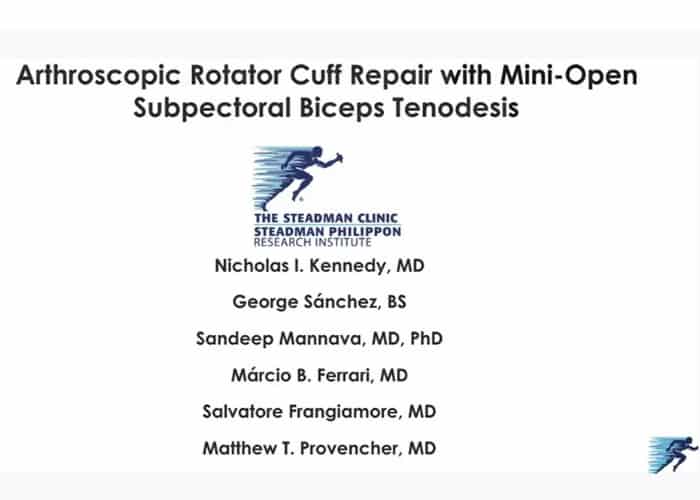A rotator cuff tear can often be treated without surgery, especially if chronic. However, the tear needs to be watched closely so that it does not progress and to diminish the chances of fatty atrophy of the muscles of the cuff. However, tears that are acute, larger, and those that are even chronic, but have continued pain and dysfunction of the shoulder attributed to the tear are recommended for surgery. With a range of tear characteristics like chronicity, degree of fatty atrophy, and number of tendons involved as well as varying patient specific characteristics including age, injury mechanism, and expectations following treatment to consider, proper and successful treatment of a rotator cuff tear is multifactorial and, consequently, challenging. Additional pathology including biceps tendinopathy may result in greater patient morbidity and an even more complex treatment decision-making process and surgical technique. This is my preferred surgical technique for treatment of a rotator cuff tear involving two rotator cuff tendons in conjunction with a lesion of the long head of the biceps tendon.
Arthroscopic Rotator Cuff Repair with Mini-Open Subpectoral Biceps Tenodesis
